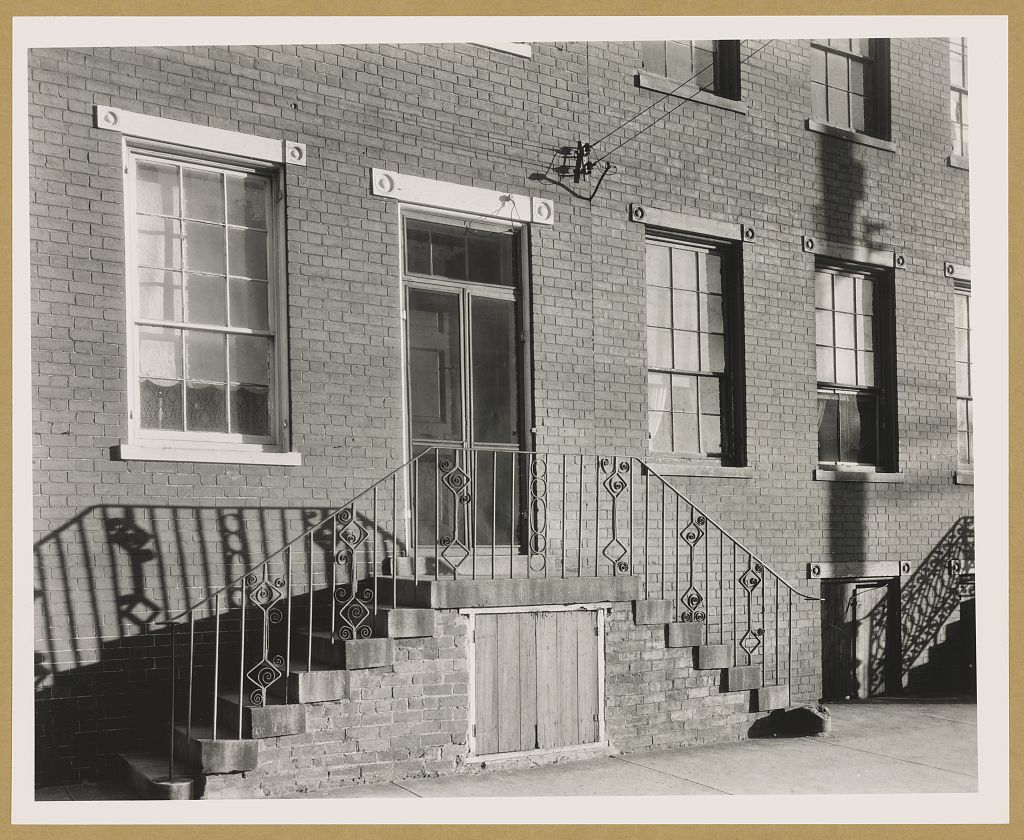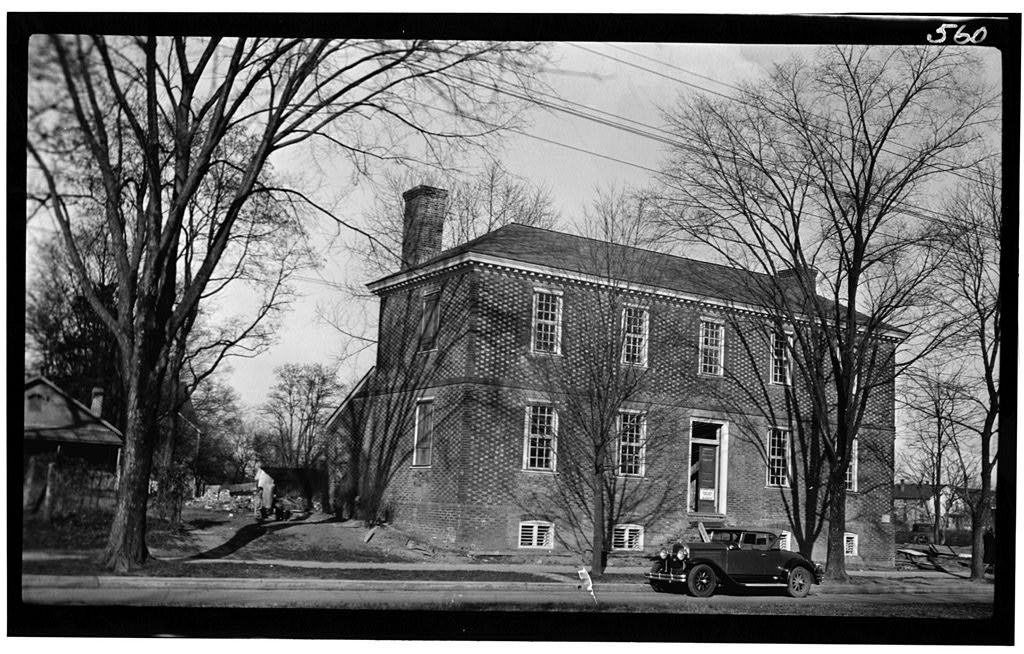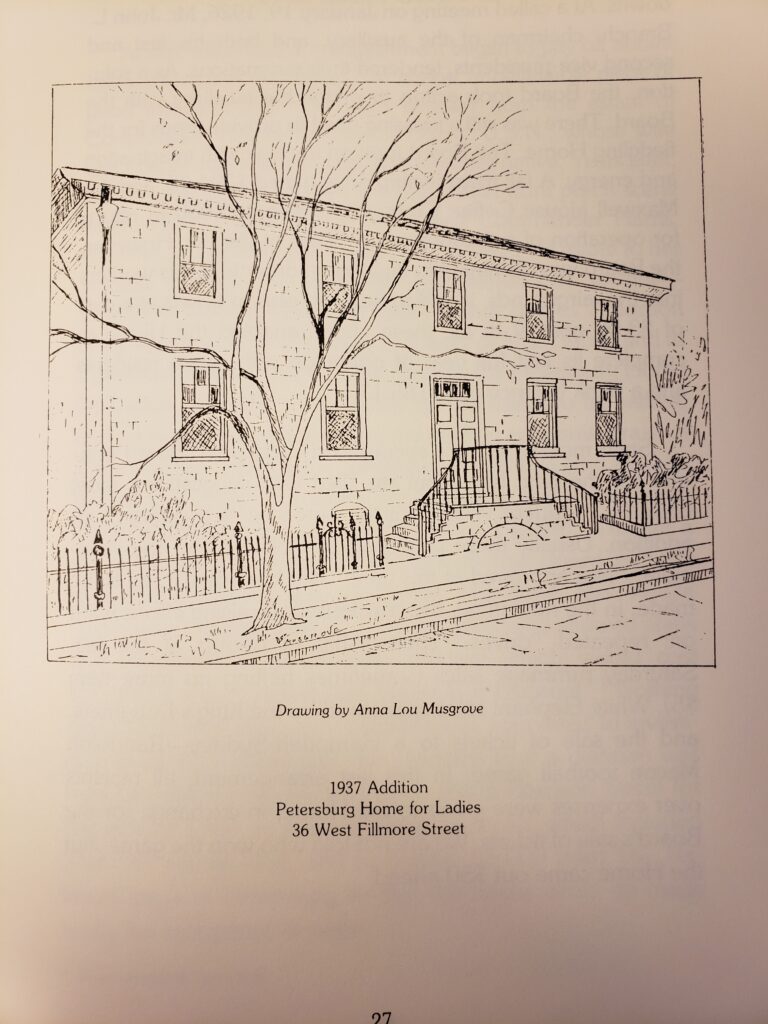Author: Tim Brinkley
In the first five years, Petersburg Home for Ladies expanded from 407 Harrison Street to include 407, 405 and 401 Harrison Street buildings. Still, by 1936 when it was proposed a new building be constructed for the Ladies Home, it was not without foreboding. The dust bowl of the Midwest, and seemingly global financial depression rallied against this vision. And yet, amidst the uncertainty of the times it was decided that expansion must take place.
In July 1936 local builder Benjamin Franklin Keeler proposed a $26,780 new construction project which was soon ratified by the Board of Directors. Originally born in Newark New Jersey in 1879, Ben Keeler settled in Dinwiddie around 1910 when he married Nellie Florence Perkinson. There they raised three children before moving to 537 West Washington Street in Petersburg in the 1930’s. (Information taken from Ancestry.com and the 1940 Census of Petersburg)
Many buildings in Petersburg were being modeled after the traditional styles of Williamsburg Virginia. Photographer Frances Benjamin Johnston, who lived from 1864 – 1952, captured images of Virginia for the Carnagie Collection of the National Library of Congress. This image of “Unidentified house front steps, Petersburg Dinwiddie County Virginia” is an example of architecture modeled after the Ludwell Paradise House in Williamsburg.

Originally constructed in 1629, the Ludwell Paradise house was in disrepair by the 1920’s until Reverend W. A. R. Goodwin took his post as Rector of Williamsburg’s Bruton Parish Church. Reverend Goodwin originally held the same position in the late 1800’s, however it had been two decades since he returned to Williamsburg. Noting the drastic deterioration of the historic buildings, Reverend Goodwin elicited the support of John D. Rockefeller Jr. and by 1926 restoration had begun on the Ludwell Paradise House.
Thus, the restoration of Williamsburg began, creating what we today call “Colonial Williamsburg.” (Information taken from ludwell.org)

As an experienced builder, Benjamin Franklin Keeler was familiar with the restoration efforts in Williamsburg. His 1936 proposal to the Petersburg Home for Ladies Board of Directors was for a new 20 room fire proofed brick home, on the Fillmore Street lot adjacent to the Harrison Street buildings, modeled after the Ludwell Paradise House of Williamsburg Virginia, in keeping with the local architecture of the day being featured in Petersburg.

The Building Committee consisted of Mrs. Mary Friend (Mrs. Thomas J., “Tucker”) Whyte; Mrs. Lucy N. (Mrs. Walton B.) Fanshaw; Mrs. Mary Waller (Mrs. Herbert C.) Lightfoot; Mrs. Kate B (Mrs. Theo A.) Field; Mrs. Conway W. (Mrs. Ashton W.) Gray. Contruction was completed by March 1937. An anecdotal tale is told of residents of Petersburg Home for Ladies reaching out to Principal James G. Scott of Anna P. Bolling Junior High, located across the street, and instructing him to assign students to maintain the flower beds. While Mr. Scott explained that such was outside of his authority, it is nonetheless a great story which exemplifies the pride each lady took in her new home. (Information taken from We Ladies by Hibernia Cuthbert)
Petersburg Deputy Fire Marshall Samuel Steiner sentiments were expressed at the December 1937 Board of Directors Meeting, “pleased to report… things much different from last year… from a two story (wood) frame building to a fire brick two story building, comfortable and cheerful, and (with the) Ladies Happy” (Letter of Deputy Fire Marshall Steiner read at Board Meeting December 1937)
For the next two decades, the Fillmore Street house was filled with laughter, memories, and the joy of living. Those who walked the halls saw changes in fashion, war bonds, telephone services and enumerable trends which would come and go. Though the world was changing, the future of Petersburg Home for Ladies was as steadfast as the foundation of their new brick building on Fillmore Street.
